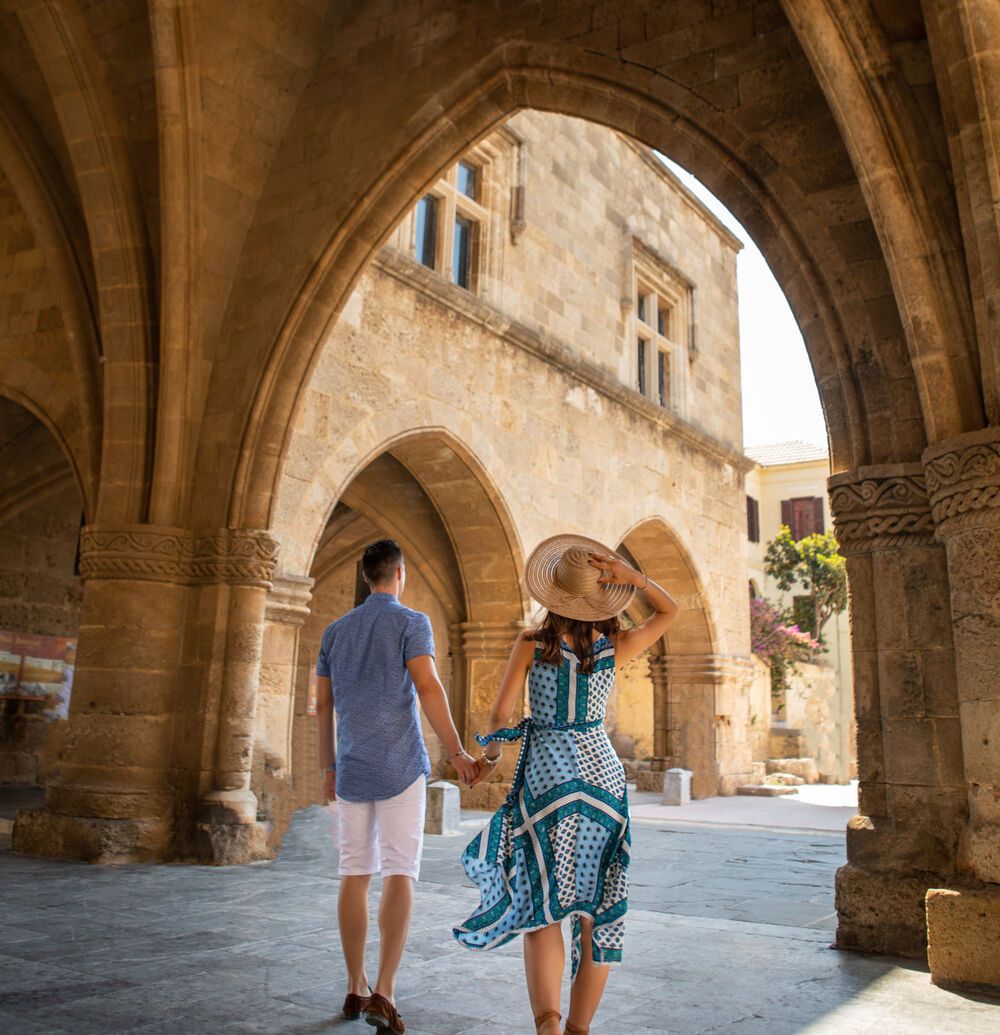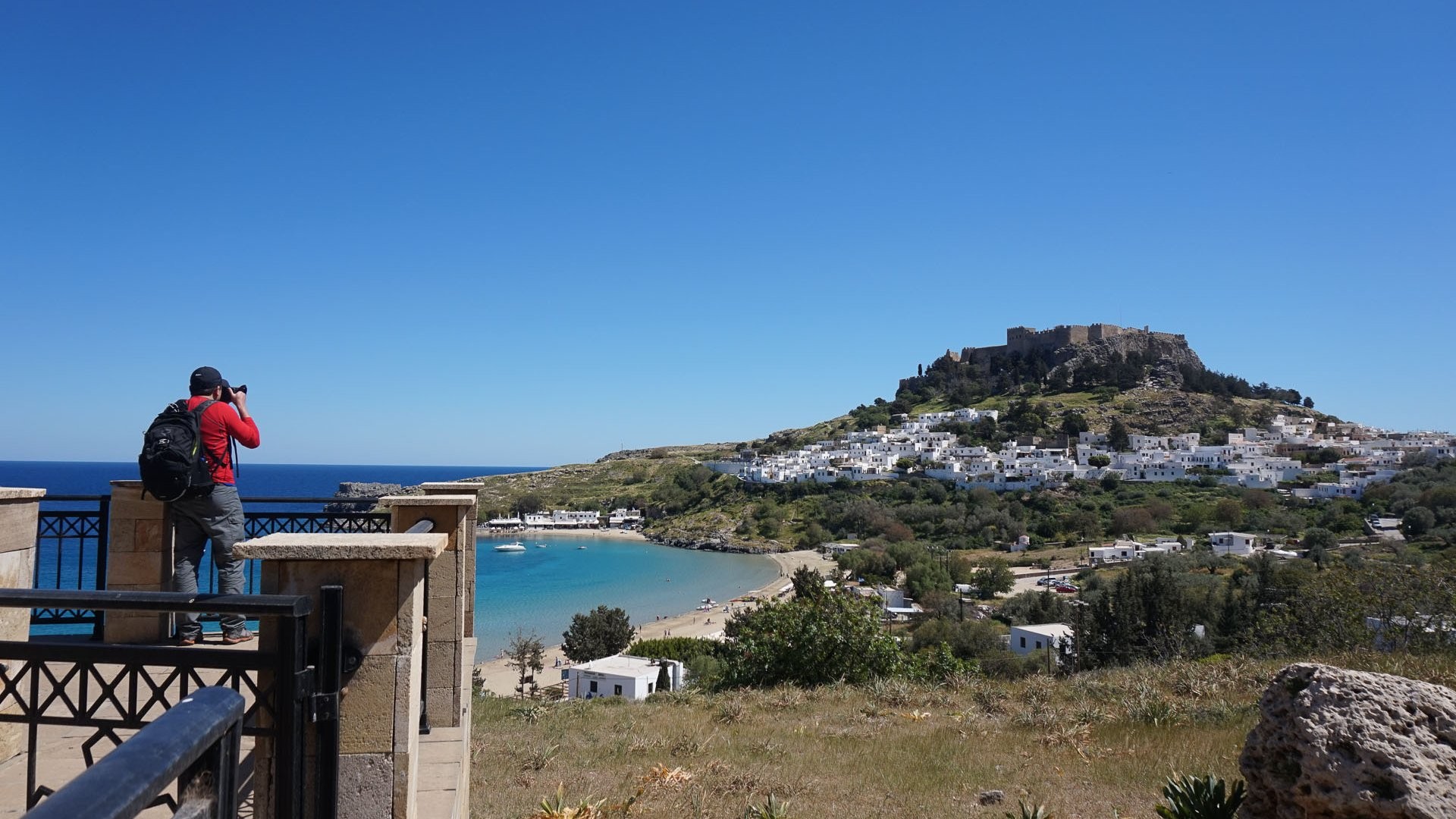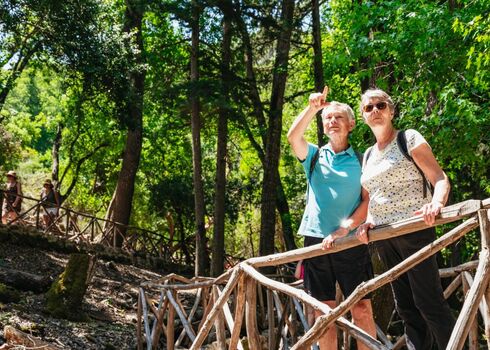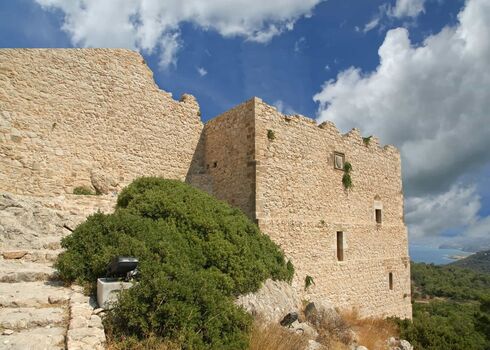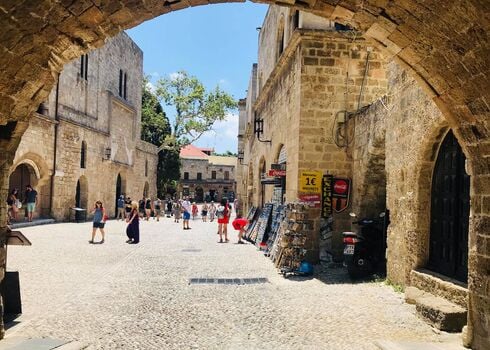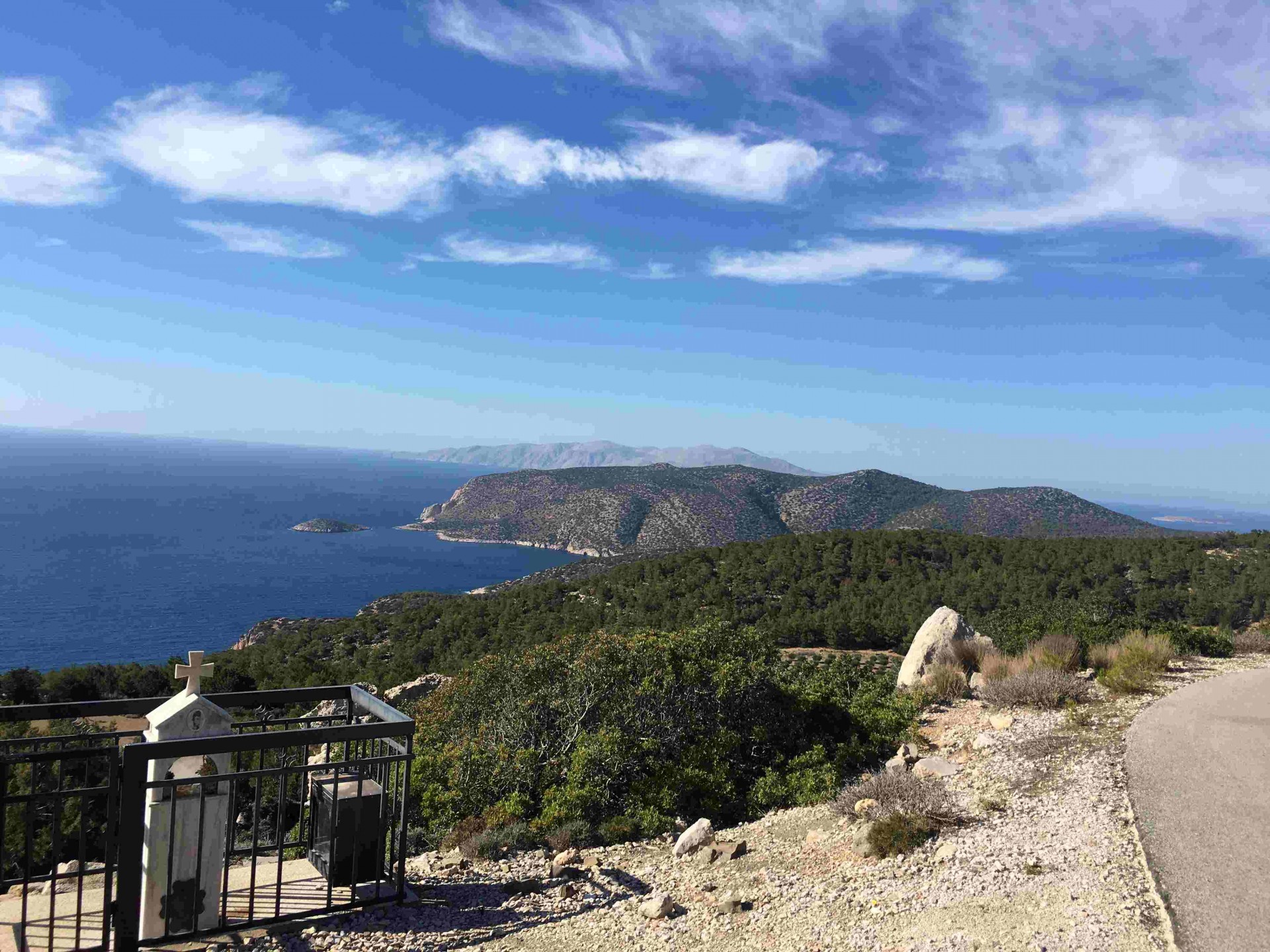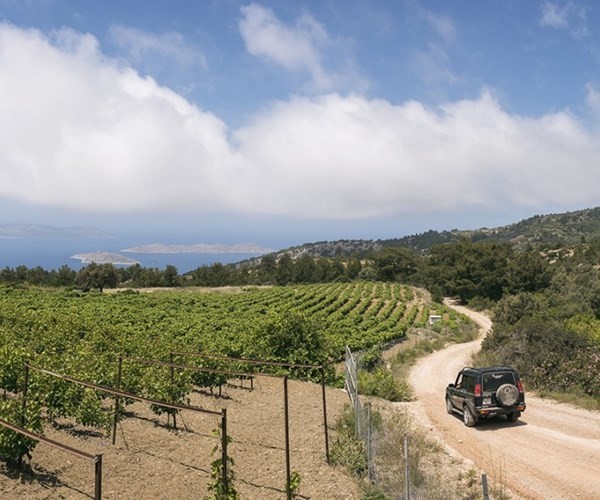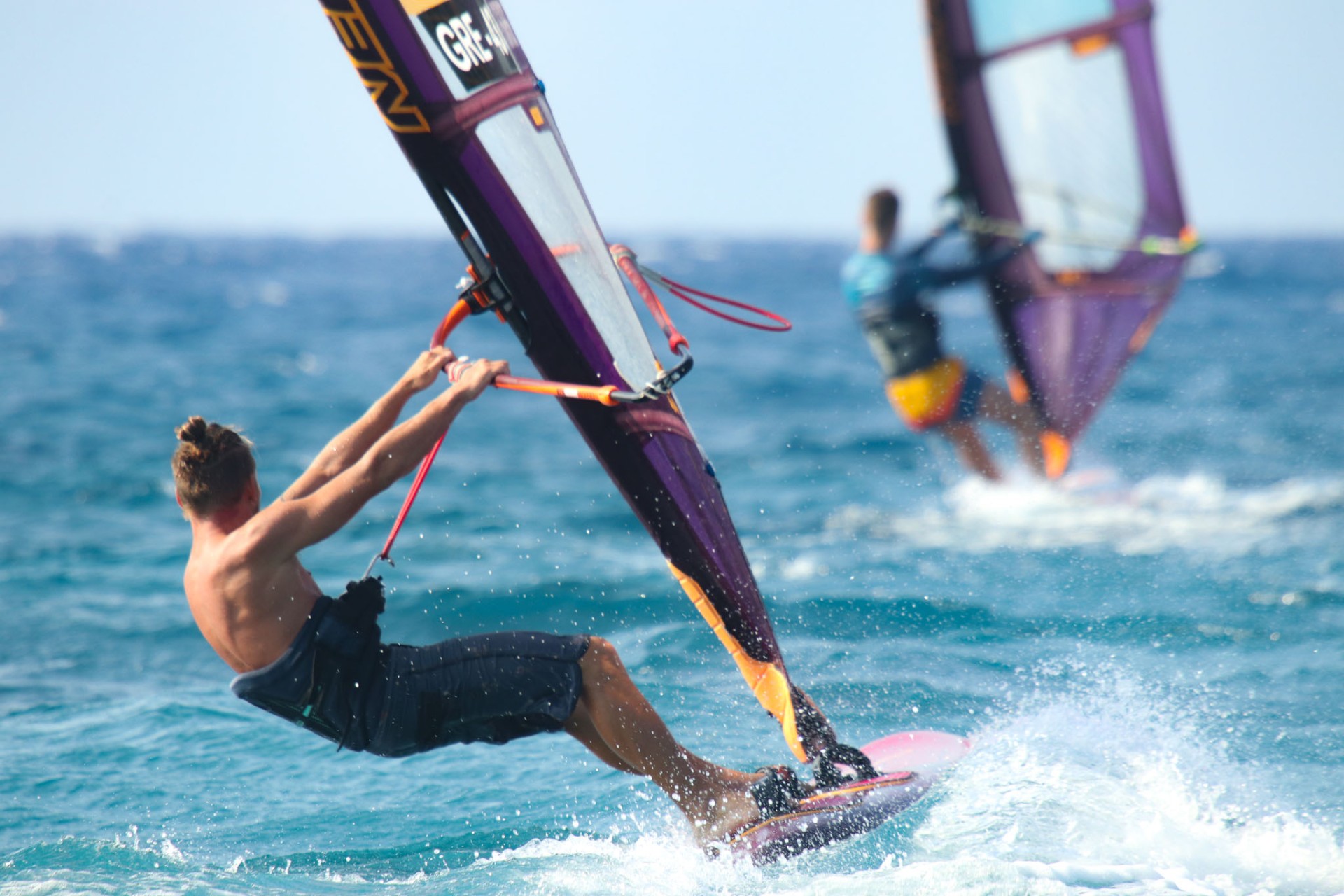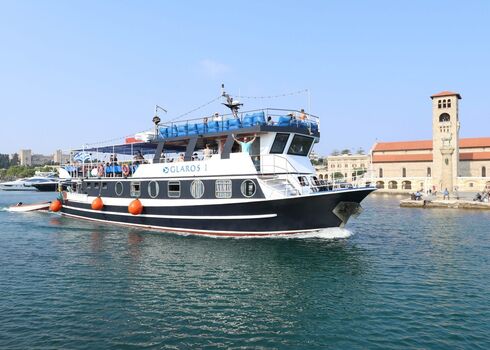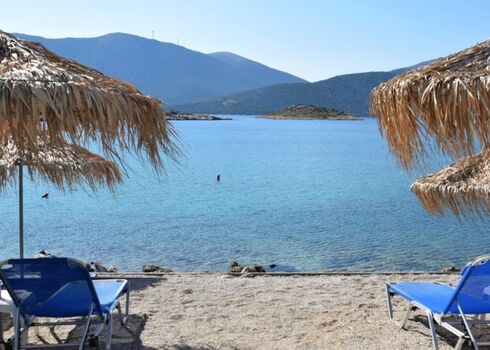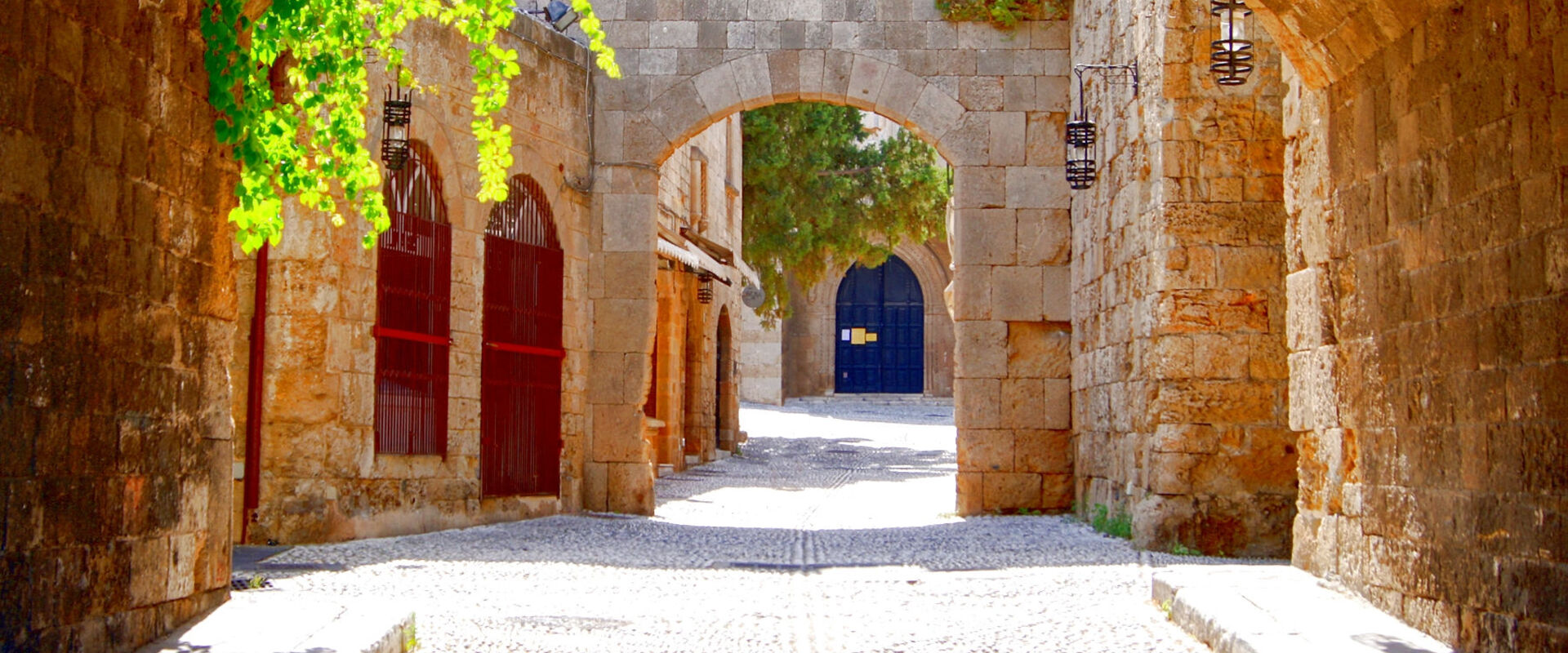Rodi è una delle destinazioni turistiche di riferimento della Grecia, con qualcosa per ogni tipo di viaggiatore: dai resort per famiglie alle spiagge sabbiose, dai villaggi nascosti alle fughe nella natura che sfruttano al meglio la lunga stagione turistica. Dalla visita alla Città Vecchia medievale e all'Acropoli di Lindos all'esplorazione di sentieri escursionistici e vigneti che continuano un'antica tradizione vinicola, il nostro elenco di cose da fare a Rodi renderà completa la vacanza sulla quarta isola della Grecia.
- Esplora la Città Vecchia medievale di Rodi
- Visitare l'Acropoli di Rodi
- Senti la magia dell'Acropoli di Lindos
- Rilassati nella natura di Rodi
- Dirigiti verso i villaggi tradizionali di Rodi
- Assaggia la tradizione vinicola di Rodi
- Assaggia i sapori unici di Rodi
- Trova la tua spiaggia preferita a Rodi
- Escursione attraverso i vari paesaggi di Rodi
- Gita di un giorno a Symi e Halki
- Le 10 migliori cose da fare a Rodi
- Mappa delle cose da fare a Rodi
- ⛴ Orari dei traghetti per Rodi
- ⛵ Crociere di un giorno a Rodi
Esplora la Città Vecchia medievale di Rodi
In cima alla lista delle cose migliori da fare a Rodi c'è l'esplorazione della Città Vecchia medievale. C'è qualcosa di ultraterreno in essa, non solo perché sembra un set cinematografico per cavalieri giostranti, ma perché è viva oggi come lo era nel Medioevo. Nella Via dei Cavalieri, ogni sampietrino sussurra una storia. A un'estremità si trova il Palazzo del Gran Maestro e all'altra l'Ospedale dei Cavalieri (che oggi ospita il Museo Archeologico). Lungo il percorso, passerai davanti alle antiche locande dei Cavalieri, costruite dalle diverse nazionalità dell'Ordine di San Giovanni (i Cavalieri Ospitalieri), che governò Rodi dal 1309 al 1522.
L'intera Città Vecchia è Patrimonio dell'Umanità dell'UNESCO - una delle meglio conservate in Europa - e la sua storia stratificata comprende quartieri ottomani ed ebraici. I residenti permanenti sono circa 6.000 e, a maggio o all'inizio di giugno, il Festival delle Rose Medievali fa rivivere la storia della Città Vecchia. Si attendono spettacoli di strada, musica, laboratori, giochi, processioni e altri eventi che ricreano l'atmosfera del XIV e XV secolo. Tutti sono invitati a partecipare, compresi i bambini, e i costumi sono incoraggiati!
Suggerimento di Discover Greece: la Città Vecchia medievale è meravigliosa alla luce del giorno, ma durante i mesi estivi vale la pena visitarla la mattina presto (prima della spiaggia o di altre attività) o nel tardo pomeriggio (prima della chiusura dei monumenti). I bar e i ristoranti si animano di sera.
Visitare l'Acropoli di Rodi
Appena a ovest della Città Vecchia medievale, l'Acropoli di Rodi offre uno sguardo molto diverso sul passato dell'isola. Situata sulla collina di Monte Smith, sopra la città moderna, era il cuore antico di Rodi, un centro di politica, culto e sport nel periodo ellenistico (III e II secolo a.C.). Non aveva il carattere difensivo tipico delle acropoli dell'epoca. Aveva piuttosto un impianto monumentale, con santuari, edifici pubblici e spazi di culto, tra cui i templi dedicati a Zeus, Atena e Apollo. Altri resti includono un teatro (Odeon) che un tempo ospitava 800 spettatori. Sul lato meridionale della collina si trova uno stadio a ferro di cavallo lungo 210 metri.
Suggerimento di Discover Greece: oltre all'Acropoli di Rodi, non dimenticare di visitare il Museo Archeologico nella Città Vecchia, dove sono conservati molti dei reperti dell'Acropoli.
Senti la magia dell'Acropoli di Lindos
Un altro punto saliente della lista di cose da fare a Rodi è visitare Lindos, a circa 50 km a sud della città principale, sulla costa orientale. Appena arrivati, dirigiti verso la collina dell'Acropoli di Lindos, dedicata alla dea Athina Lindia. Era uno dei centri religiosi più importanti dell'antica Rodi, con fondamenta che risalgono al IX secolo a.C. e un imponente tempio dorico costruito intorno al 300 a.C.. La vista sul mare dalla cima è magica. Alle spalle si trova il villaggio imbiancato di Lindos, un labirinto di negozi, bar e taverne. Intorno alla penisola, la spiaggia di Lindos è popolare e organizzata. Tuttavia, la località balneare per eccellenza è la Baia di San Paolo, un'insenatura sabbiosa quasi completamente chiusa che si può vedere dalla cima dell'Acropoli. Con le sue acque cristalline, i lettini e il bar sulla spiaggia, si può tranquillamente rimanere fino al tramonto.
Scopri la meraviglia di Lindos
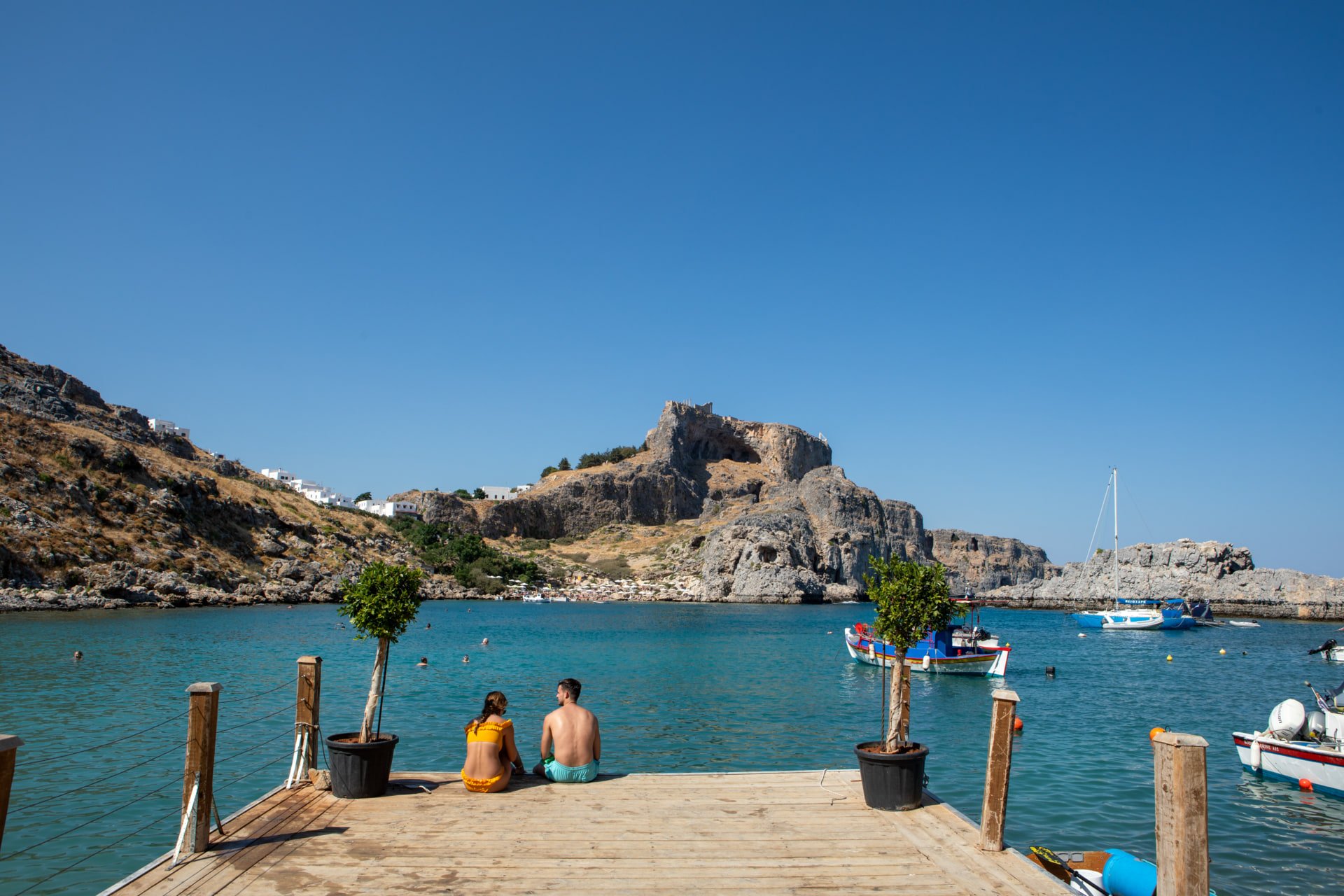
Rilassati nella natura di Rodi
Ci sono molti luoghi da visitare a Rodi che offrono un cambiamento di ritmo rispetto alle visite turistiche e alla vita da spiaggia. Uno dei più popolari è la Valle delle Farfalle che, da giugno a settembre, diventa un rifugio per migliaia di falene tigre della Jersey, attratte dalla resina degli alberi di sweetgum che crescono qui. Le passerelle di legno che attraversano la valle ombreggiata, costeggiando ruscelli e cascate, la rendono una passeggiata piacevole e facile, particolarmente apprezzata dalle famiglie. Ma ti invitiamo a fare attenzione e a contribuire alla salvaguardia di queste piccole e delicate creature. Vicino alla Città Vecchia si trova il Parco della Valle Rodini, con una manciata di sentieri e laghetti. È un luogo ideale per un picnic.
Epta Piges (Sette Sorgenti), a circa 30 km a sud di Rodi, è un'altra delle mete preferite, con sentieri ombreggiati e corsi d'acqua provenienti da sette sorgenti naturali che alimentano un lago artificiale. Il punto culminante è la passeggiata fino a una piccola cascata e al punto di balneazione. È rinfrescante, anche in piena estate. Più a sud, il lago di Apolakkia è un gioiello meno conosciuto vicino al villaggio di Apolakkia. Creato da una diga, è circondato da colline ricoperte di pini ed è diventato un tranquillo habitat umido. Ci sono sentieri per passeggiate a piedi, in bicicletta e a cavallo, pedalò e kayak a noleggio, oltre a un piccolo chiosco informativo. Prepara un picnic e goditi la solitudine.
Dirigiti verso i villaggi tradizionali di Rodi
I villaggi costieri e interni di Rodi offrono un ritmo di vita più lento e una finestra sulle tradizioni locali. Potrai visitarli singolarmente o combinarne alcuni in una giornata di visite ai villaggi, avendo così più tempo per goderti i negozi che vendono prodotti artigianali e prelibatezze locali. Archangelos è uno dei villaggi più grandi di Rodi, noto per il suo forte carattere locale e la tradizione della ceramica, nonché per il suo castello medievale in cima alla collina, ormai in rovina. Koskinou è famosa per le sue case dipinte a colori e i suoi cortili a mosaico, a breve distanza dalla città di Rodi. Sulla costa occidentale, invece, Kritinia e Monolithos sono note per i loro castelli in cima alle colline e le ampie vedute sul mare, mentre Fanes ha case dipinte con colori vivaci e un'atmosfera rilassata.
Sulle pendici del monte Attavyros si trova Embonas, circondata da vigneti e da graticci per l'essiccazione dell'uva alla fine dell'estate: una tappa perfetta se stai esplorando le strade del vino di Rodi. Più a sud, Vati e Lahania offrono case tradizionali in pietra e un senso di lontananza, con sentieri per passeggiate che partono dalle loro piazze verdeggianti. Per un tramonto da ricordare, Charaki è perfetta per una cena in riva al mare con il castello di Feraklos illuminato sullo sfondo. Che tu sia attratto dalle tradizioni artigianali, dalle bellezze naturali o dalla possibilità di soffermarti in una taverna di paese, i villaggi di Rodi ti mostrano un lato più tranquillo e autentico dell'isola.
Assaggia la tradizione vinicola di Rodi
Dopo aver visto i vigneti intorno al monte Attavyros, ti interesserà sapere che la produzione di vino a Rodi risale almeno al VII secolo a.C.. Il clima caldo e secco dell'isola e il terreno montuoso l'hanno resa ideale per la coltivazione della vite e oggi si possono visitare numerose cantine, molte delle quali a conduzione familiare.
Le degustazioni di vino possono includere un tour dei vigneti e delle cantine, oltre alla possibilità di assaggiare varietà prodotte con uve autoctone come l'Athiri e il Moscato (bianco) e la Mandilaria e l'Amorgiano (rosso). Due dei vini più importanti di Rodi hanno lo status di Denominazione di Origine Protetta, a conferma dell'antica reputazione dell'isola per il vino di qualità.
Suggerimento di Discover Greece: se ti trovi a Rodi alla fine dell'estate, potrai assistere alla vendemmia in pieno svolgimento.
Assaggia i sapori unici di Rodi
A Rodi il cibo è espressione di generosità e ospitalità. Il suolo fertile e la varietà del terreno producono un'abbondanza di ingredienti: dai pomodori, alle olive, alle verdure selvatiche, al grano, alle erbe e ai legumi. La cucina dell'isola è caratterizzata da semplicità e gusto, con ricette tramandate da generazioni. In cima alla lista delle cose da fare a Rodi per i buongustai ci sono i pitaroudia (frittelle di ceci aromatizzate con menta e cipolla), i dolmadakia (foglie di vite ripiene di riso ed erbe) e le carni cotte a fuoco lento servite con grano o bulgur.
Rodi è anche famosa per il suo miele, che viene utilizzato per la preparazione di dolci locali come la melekounia (barrette di sesamo e miele spesso preparate per matrimoni e celebrazioni) e il torrone. Per un'immersione più approfondita in questa dolce tradizione, recati al Museo delle api di Rodi, appena a sud dell'aeroporto. È l'unico del suo genere in Grecia e offre una panoramica sull'apicoltura tradizionale e sul ruolo vitale delle api nella cultura alimentare e nell'ambiente locale.
Trova la tua spiaggia preferita a Rodi
Potreste scegliere una spiaggia diversa per ogni giorno della tua vacanza a Rodi, ma non riuscireste comunque a scalfire la superficie. La maggior parte di esse si trova sulla costa orientale, con le zone intorno a Kallithea e Faliraki che sono le preferite in estate per le loro lunghe spiagge sabbiose e le eccellenti strutture. La costa meridionale è ricca di spiagge da scegliere in auto, in autobus o anche in barca, anche noleggiando una barca con skipper dal porto di Mandraki o da Rhodes Marina, vicino alla città principale: un'ottima scelta se cerchi un posto tranquillo per fare il bagno.
Le spiagge più popolari di Rodi sono dotate di lettini, bar sulla spiaggia e taverne. Alcune hanno storie interessanti, come la spiaggia di Anthony Quinn, che prende il nome dall'attore americano, mentre Kallithea Springs si distingue per il suo design unico in stile art déco. Più a sud si trovano la ghiaiosa Traganou e la lunga e sabbiosa Afandou. Tsambika è una delle spiagge più fotografate di Rodi, mentre Agathi è ideale per le famiglie. Glystra offre acque calme e poco profonde e un ambiente più tranquillo. Nelle vicinanze si trovano le spiagge di Lindos e St Paul's Bay e, proprio sulla punta meridionale di Rodi, Prasonisi, dove una spiaggia a due lati diventa una penisola in estate e le condizioni sono spesso ideali per il vento e il kite-surf.
Suggerimento di Discover Greece: a Rodi c'è un'ampia scelta di spiagge con centri per gli sport acquatici e le immersioni, oltre a spiagge con strutture Seatrac per le persone con disabilità e problemi di mobilità.
Esplora le migliori spiagge di Rodi
Escursione attraverso i vari paesaggi di Rodi
L'escursionismo è uno dei modi migliori per raggiungere parti di Rodi spesso trascurate dai visitatori. Dai sentieri collinari attraverso le pinete ai percorsi costieri con vista sul Mar Egeo, c'è una gamma di percorsi escursionistici per tutti i livelli. I più impegnativi si trovano sulle pendici del monte Attavyros, la montagna più alta di Rodi (1.215 metri). Partendo dal villaggio di Embonas o di Agios Isidoros, ci sono sentieri segnalati con un dislivello significativo di circa 750 metri, che portano alle rovine dell'antico Tempio di Zeus Atavyrios. Il terreno è roccioso ed esposto, quindi sono indispensabili calzature adeguate e acqua. Per una salita più breve ma comunque gratificante, il sentiero per il Monastero di Tsambika prevede quasi 300 gradini di pietra attraverso un bosco di cipressi, che portano a una vista panoramica dalla cappella a 320 metri.
Vicino a Rodi, il sentiero costiero dalla spiaggia di Psaropoula a Kritika (Kato Petres) è una dolce passeggiata di 1,8 km lungo la costa, con aree di sosta e vista sul mare. Un'altra opzione accessibile è il sentiero che sale sulla collina di Filerimos a Ialyssos, un percorso di 4 km attraverso pini e querce, che termina con un monastero e una grande croce con ampie vedute. Per chi è alla ricerca di escursioni organizzate, c'è un'ampia scelta di esperienze escursionistiche di una giornata intera o addirittura di più giorni che offrono percorsi guidati attraverso i diversi terreni dell'isola.
Suggerimento di Discover Greece: la primavera e l'autunno sono le stagioni migliori per tutte le attività naturalistiche a Rodi, con temperature più miti e paesaggi in fiore. Assicurati di seguire tutte le precauzioni di sicurezza appropriate quando fai escursioni in Grecia, soprattutto nei mesi estivi.
Gita di un giorno a Symi e Halki
Una gita di un giorno da Rodi a Symi o Halki, due isole vicine ma molto più piccole, è il modo migliore per sperimentare un ritmo di vita completamente diverso durante le tue vacanze. Entrambe offrono un cambiamento di scenario e di atmosfera, con palazzi color pastello che fiancheggiano i loro porti, un ricco patrimonio marittimo e il tipo di fascino tranquillo che sembra di fare un salto indietro nel tempo.
Symi ti accoglie con case neoclassiche che si ergono sul porto di Gialos, dove potrai passeggiare sul lungomare, esplorare il centro storico di Horio o visitare il Monastero dell'Arcangelo Michele a Panormitis. Non andare via senza aver provato i famosi gamberetti di Symi. Halki, invece, è più tranquilla e di basso profilo. Si concentra sulla città portuale di Emporio, con case colorate, punti di balneazione a due passi dal molo e un'atmosfera senza tempo. A un'ora da Rodi, entrambe le isole sono un modo semplice per vivere il Dodecaneso nel suo aspetto più autentico.
Le 10 migliori cose da fare a Rodi
Da antichi monumenti e villaggi incantevoli a giornate in spiaggia, sapori locali e fughe nella natura, l'elenco delle cose da fare a Rodi è vario come l'isola stessa. Che si tratti della prima visita o di una delle tante, Rodi è in grado di rivelare ogni volta qualcosa di nuovo.
Mappa delle cose da fare a Rodi
⛴ Orari dei traghetti per Rodi
Rodi, l'isola più grande del Dodecaneso, è collegata ad Atene attraverso il porto di Pireo, con rotte di traghetti tutto l'anno.
Dal Pireo:
- Traghetto convenzionale: ~15-17 ore (di solito pernottamento)
I traghetti per Rodi offrono in genere cabine, sedili numerati e ponte di carico per il comfort sulle lunghe distanze.
I bagagli sono inclusi nel prezzo del biglietto e a bordo sono disponibili zone di deposito.
In estate, gli orari dei traghetti diventano più frequenti, e Rodi ha anche collegamenti diretti con altre isole del Dodecaneso come Kos, Symi e Kalymnos.
⛵ Crociere di un giorno a Rodi
Esplora le meraviglie di Rodi dall'acqua
After Best of Title
Vacanze sull'isola di Rodi
Se c’è una sensazione che rimane addosso quando si visita Rodi nei mesi più tranquilli, ai margini del picco estivo, è che in questi momenti tutta la magia e la storia medievali si rivelano, e tutti quei sapori, le fughe e i villaggi autentici sparsi ovunque sull’isola splendono più che mai.
FAQs Title
FAQs
Rodi è facilmente raggiungibile in aereo o in traghetto durante tutto l'anno. Ci sono collegamenti giornalieri in traghetto con il porto del Pireo ad Atene e con le isole greche (soprattutto le Cicladi e le altre isole del Dodecaneso e con Creta). C'è un aeroporto con regolari collegamenti giornalieri con Atene e voli diretti verso destinazioni internazionali durante i mesi più affollati.
I punti di riferimento culturali più famosi di Rodi sono la Città Vecchia medievale (abitata ininterrottamente dal Medioevo e patrimonio dell'UNESCO) e l'Acropoli di Lindos (che comprende il Tempio di Lindias, risalente al 300 a.C.). Il monumento antico più famoso è il Colosso di Rodi (una delle sette meraviglie del mondo antico). Si dice che la gigantesca statua si trovasse di fronte al porto e sostenesse una catena che ne bloccava l'ingresso di notte, anche se non ne sono stati trovati i resti. Altri punti di riferimento culturali di Rodi sono l'antica Kamiros (i resti di una città dorica del V secolo a.C.), l'Asklipio (un castello del XV secolo del Gran Maestro D'Aubusson) e l'Acropoli di Rodi.
Essendo una delle isole greche più popolari, Rodi è molto affollata nei mesi di punta delle vacanze estive. Il periodo migliore per visitarla è quindi aprile-metà giugno e settembre-ottobre, quando la folla estiva si è diradata (i bagni sono migliori da giugno a ottobre). La primavera e l'autunno sono i mesi migliori per praticare attività all'aperto a Rodi, come le escursioni.
Rodi è la quarta isola più grande della Grecia (1.400 km2), quindi è meglio noleggiare un'auto o una moto se si vogliono visitare tutti i punti salienti dell'isola, oppure prendere un taxi. C'è anche un buon servizio di autobus (Rhodes KTEL) che collega le principali destinazioni e molte spiagge.
There are so many things to do in Rhodes that you can dedicate your entire holiday (6-7 days) to the island, but you can also spend just a few days there as part of an island-hopping itinerary to get a taste for it.
Prenota il tuo viaggio
Tutto quello di cui hai bisogno per pianificare le tue vacanze in un unico posto, in cui ti sarà permessa la prenotazione diretta e beneficiare delle tariffe ufficiali online.
Gita di pesca a Rodi
Rhodes Island Tour & Wine Tasting Experi...
Accessible Tour in Rhodes: Kallithea and...
Mitsis Grand Hotel
Anthi Maria Beach Apartments
Apollo Blue Hotel
Villa Aquavisionaire
Cabu Hotel | Adults Only
Kresten Palace Hotel Rhodes
Discover the highest-rated ground transportation services for travelers, based on reviews across Google, Tripadvisor, and Trustpilot.
Welcome Pickups offers a seamless, safe, and enjoyable experience for travelers
Trained Drivers
Hand picked & trained drivers
Low prices
Same price as a regular taxi from the line
Arrival monitoring
Drivers are always on time
Quality support
24/7 email & phone support

